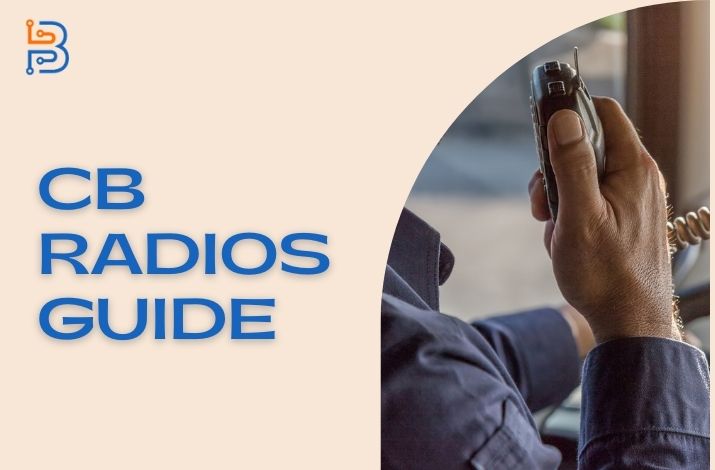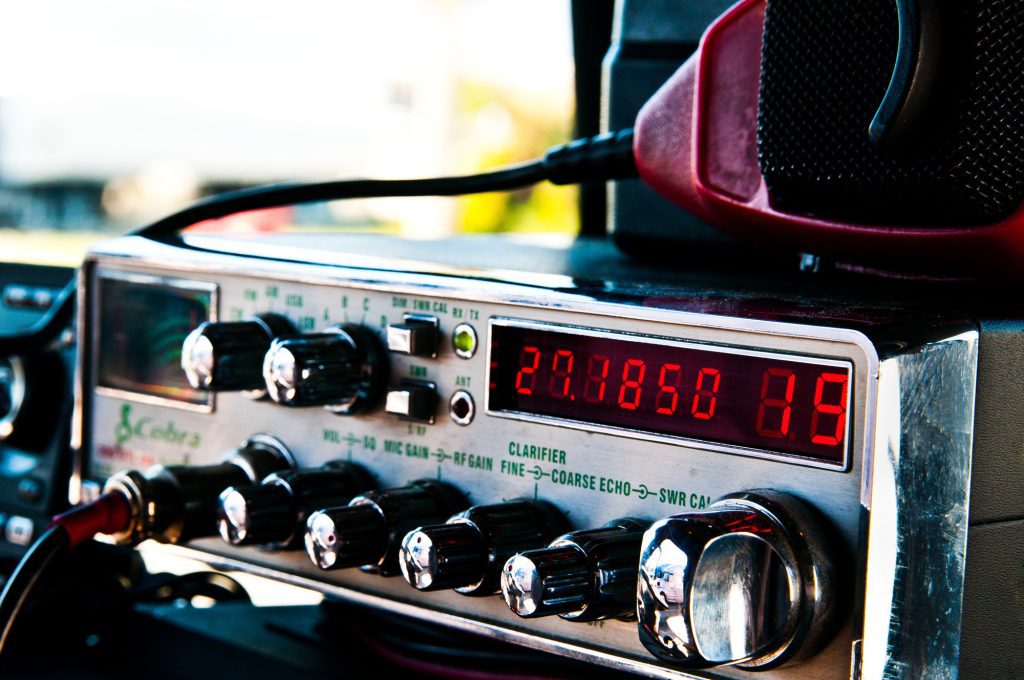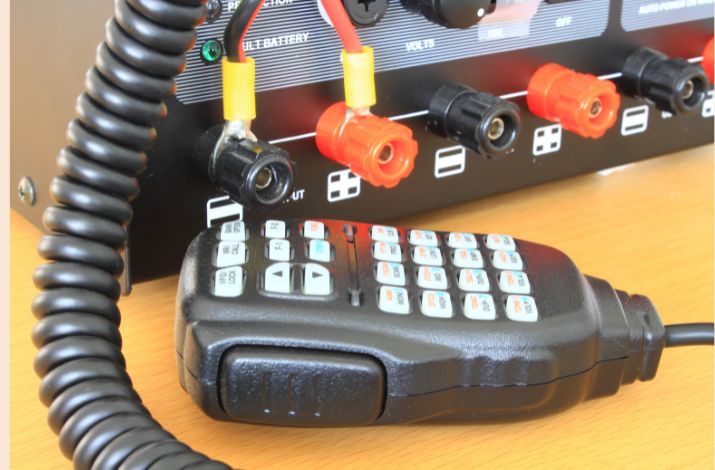CB Radios: What Are They And What Are They Used For?

Have you seen trucks with those boxy antennas on the roof? Those are CB radios, two-way communication links connecting drivers and anyone sharing the road.
CB, short for citizens band, radios have a unique place in radio history. This article explores their history, functions, and how they stay useful in this modern world.
What Are CB Radios?
The CB radio is a two-way communication device operating on 40 channels nestled around the 27 MHz band. A pioneering engineer named Irving ‘Al’ Gross invented CB radios back in the 1940s. However, they only gained popularity in the 1970s when the FCC allowed the public to use them without licenses. Soon, truckers, road trippers, hobbyists, and ordinary folks had this reliable personal radio communication.
Modern CBs come in three types: mobile, base station, and handheld. Mobile units can be permanently installed in vehicles or plugged into lighter sockets. Base stations boast a better range with a rooftop antenna. Compact battery-powered handhelds allow portable use. Most models also have emergency Channel 9. While CB signals don’t reach too far, they meet short-range voice communication needs.
Handheld CB radios are compact and battery-powered, allowing portable use. Most units also have emergency Channel 9 to call for help when needed. While limited in range compared to other radio services, CB radios fill an important niche for short-distance voice communication.
Uses For CB Radios
CBs have many uses across fields but excel in certain roles like:
On the Road
- Trucking
Truckers rely on CB radios to share vital driving details with other drivers – accident hotspots, speed traps, hazardous road conditions, and more. Colorful handles like ‘Big Ben’ and ‘Highway Honey’ also liven things up.
- Road Trip Communication
A CB radio provides constant contact for road-trippers off the beaten track where cell signals drop out. It can help locate the next stop for gas or camping by asking locals who are tuned into Channel 9. CBs also offer valued companionship while driving over long, empty miles.
- Emergency Assistance
When broken down on lonely highway shoulders or stranded after crashes, CB SOS calls on Channel 9 can summon critical help. Otherwise isolated, users can radio police, EMTs, and tow trucks with a simple ‘Breaker one-nine for the Big 10-4.’

Beyond The Road
- Off-Road Activities
Rugged CB radios help off-roading enthusiasts navigate unfamiliar terrain and stay coordinated off-grid. Groups can carry them into forests to arrange meetups, check in during the day, and call for assistance if equipment fails miles from the trailhead. CB channels also relay intel on washed-out trails, flooding, and inbound storms.
- Rural Communication
In remote locations with spotty cell service, CBs connect residents, farms, and businesses. Rural legislators still lobby the FCC to expand CB channels to improve rural access. CBs link homesteads with weather reports, call vets for livestock emergencies, and help general stores order stock. Even with a modest antenna, CB signals can reliably cover over 15 miles in flat rural areas.
- Hobbies and Clubs
Aviation enthusiasts use CB radios for basic communication during model airplane meets and flight simulations. Some amateur radio clubs have dedicated frequencies to encourage members to get amateur radio licenses. The CB radio is also beneficial for people practicing off-the-grid activities like camping and hiking. Outdoor enthusiasts can stretch communication into areas where cell coverage fizzles out, like forests, mountains, and rural dead zones.
Read Also: Ways for Streamlining Small Business Operations with the Best CRM Software
Special Applications
- Disaster Response
CB radios are essential post-disaster when storms, flooding, or quakes bring regular communication and networks down. Recovery teams utilize them to coordinate efforts with cells and landlines out of the picture. Many emergency responders still keep CB radios to fill gaps regular channels can’t, which is critical for helping civilians needing emergency communication.
- Event Support
Personnel at wide-scale venues like racetracks and festivals often use CB radios to direct parking flow, coordinate with other staff members, and call for medical response when needed. Handheld CBs also smoothen behind-the-scenes logistics at outdoor concerts and big events.
- Personal Use
CB radio use isn’t just for truckers or emergency responders. Some private communities and neighborhood watch groups use CBs proactively as their safety net. Volunteer patrol members report suspicious sights on a dedicated channel to alert others and keep areas secure. A few imaginative households have even used CBs as makeshift intercom systems or for sharing community matters.
Limitations And Regulations
- CB Radio Range
An average CB radio tops out at up to five miles over open country based on terrain. With a powerful antenna, that range can stretch beyond 10 miles. Though thick forests, electronics emitting interfering frequencies, and weak antennas can decrease that range. Portable CB radios have a much shorter range, often only extending up to 100 yards.
- Legal Aspects of CB Radio Use
In the United States, most private citizens can own a CB radio and hit the airwaves. The FCC allows anyone to personally operate CBs without permits for as long as they follow broadcast power and frequency rules. However, many other countries might have different regulations. Some prohibit operation entirely without prior documentation formally authorizing CB ownership and use.

- CB Radio Etiquette
CB radio usage has a language and protocol all its own for effective communication, long cultivated by veteran users over the years. Unique personalized handles become your on-air nickname, while shorthand phrases like ’10-4′ for ‘okay’ or ’10-7′ for ‘signing off’ persist in radio exchanges. Newcomers would be wise to familiarize themselves with the CB slang and etiquette basics before transmitting and joining an open channel.
The Future Of CB Radios
Smartphones and satellite networks are everywhere, but vintage CB radios still hold their own. They’re affordable, instant, and often more reliable than other mobile and virtual communication methods, especially in remote areas. Additionally, the FCC might soon double the available channels, opening the door for CB data use.
Off-road driving clubs, radio enthusiasts, and emergency personnel in areas with unreliable coverage utilize CB radios to stay connected, sparking a rising interest in CB usage. From short bursts of information to long-range chats across the miles, these 70s icons are proving they’re still capable of forging connections and keeping conversations alive in a world often dominated by screens.
Conclusion
CB radios have connected drivers, workers across industries, and hobbyists for over four decades. They let you talk beyond line of sight, in real-time, using easy-to-use gear. From bustling highways to quiet backcountry trails, CB radios have earned their reputation as the practical person’s two-way radio.
So, when you catch a ‘breaker check’ on the air indicating a fleeting traffic slowdown, recognize that generations-old CB culture still thrives behind that iconic chatter.






